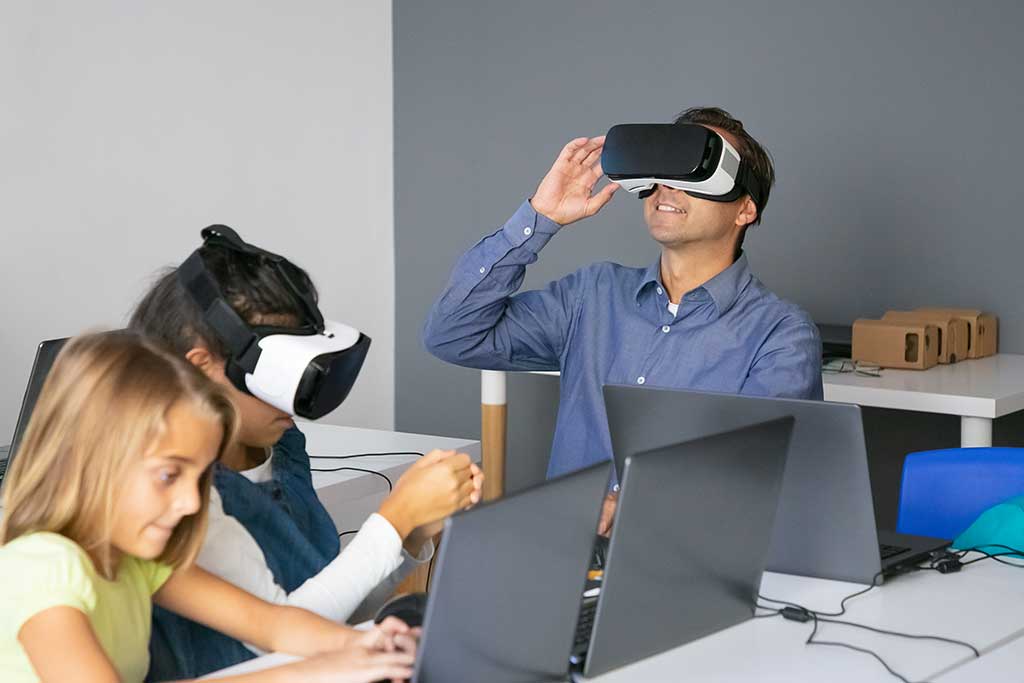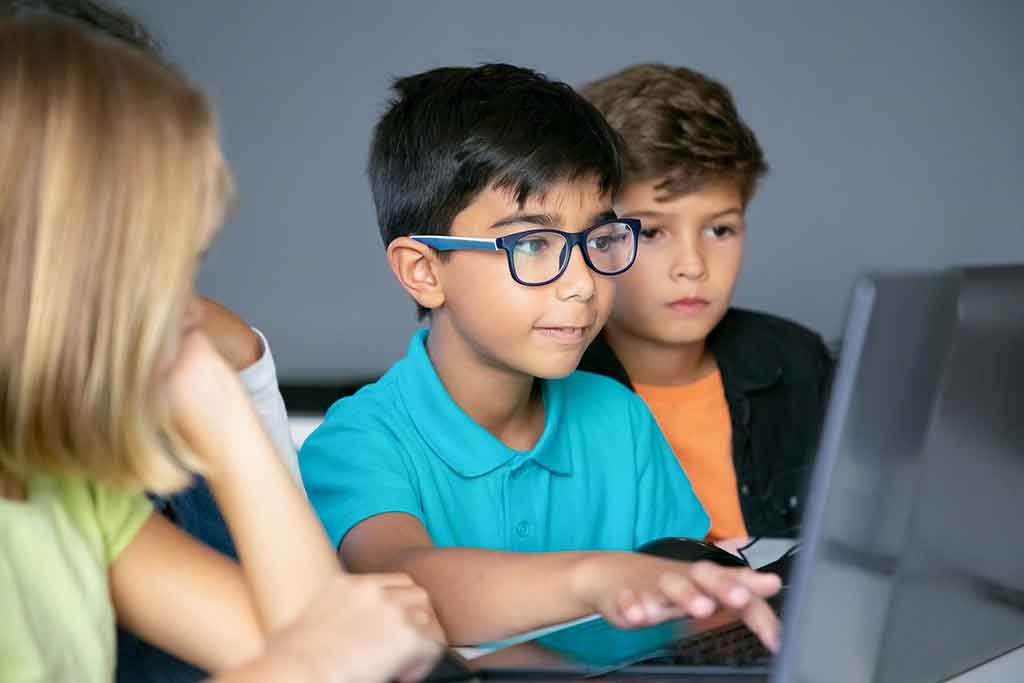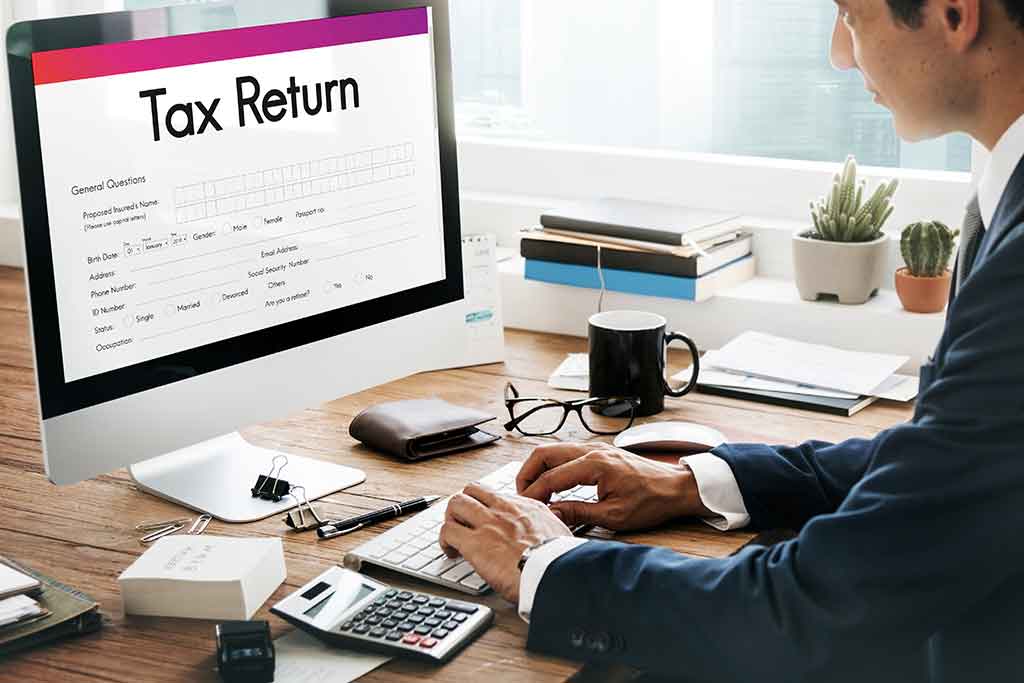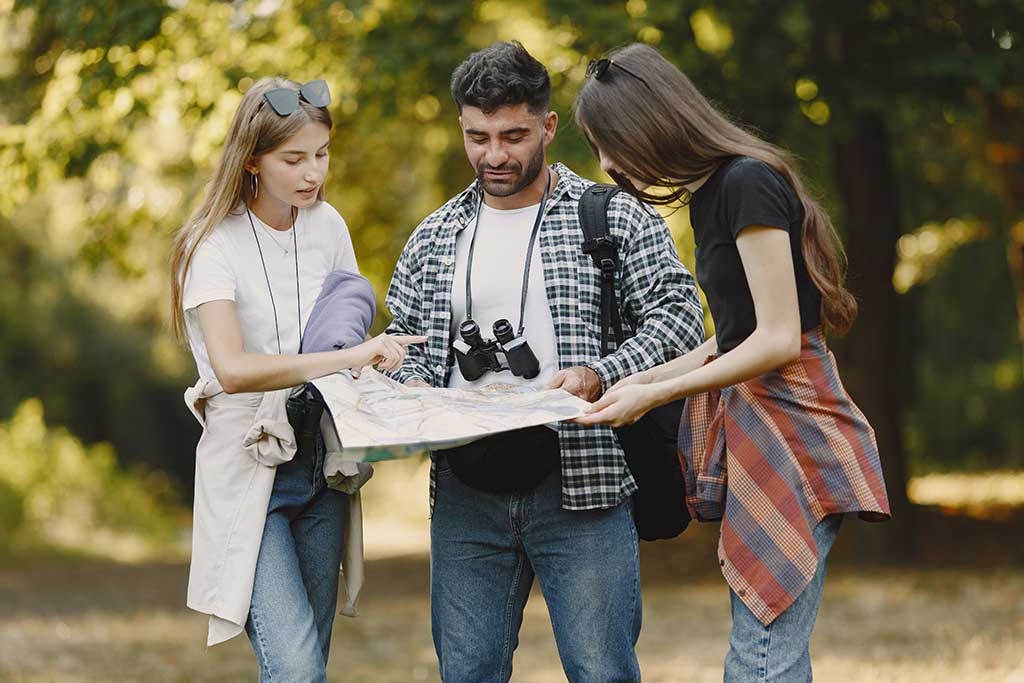Now Reading: How Software Applications Make Our Lives Easier: The Invisible Problem-Solvers
-
01
How Software Applications Make Our Lives Easier: The Invisible Problem-Solvers
How Software Applications Make Our Lives Easier: The Invisible Problem-Solvers
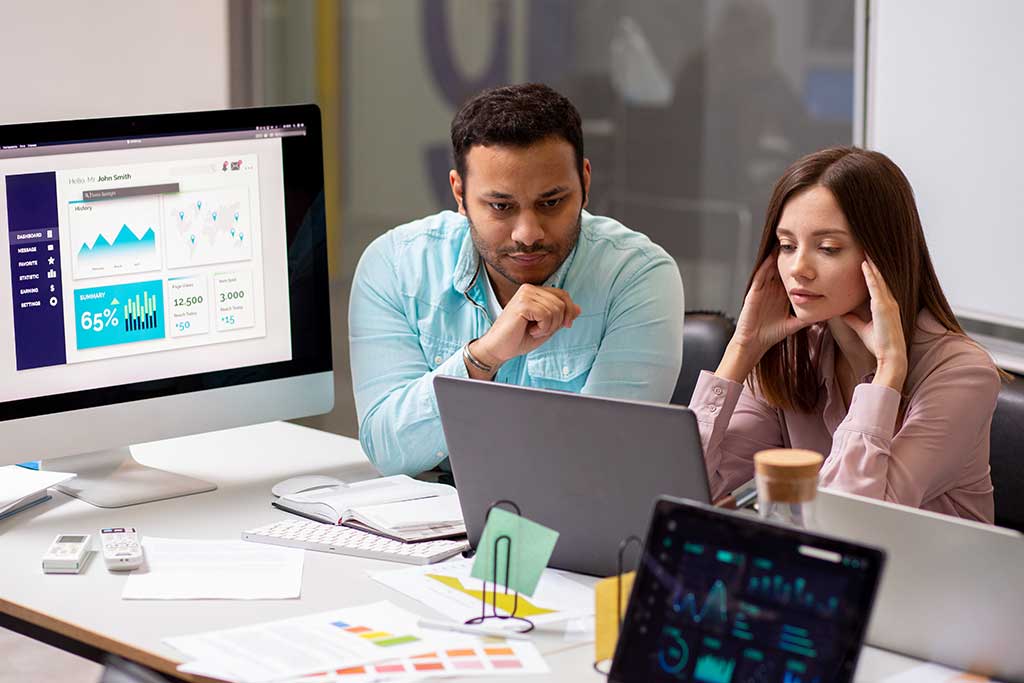
Software applications are invisible helpers that simplify our daily lives. They manage our schedules, connect us globally, and provide endless information and entertainment. While they offer incredible convenience and efficiency, it's vital to use them mindfully to avoid pitfalls like addiction and privacy issues, ensuring they remain tools for a better life.
Imagine trying to find a book in a library with no labels, no shelves in order, and no librarian to help. It would be a long and frustrating task. Now, imagine a friendly guide who instantly knows where every book is, can recommend similar ones you might like, and can even have it delivered to your table. This is what software applications do for our modern lives. They are the invisible guides, the digital helpers that work quietly in the background, turning complex chaos into simple order.
We interact with these applications dozens, even hundreds, of times a day, often without even realizing it. From the moment your smartphone’s alarm clock wakes you up to the streaming service you use to watch a show before bed, software is there, making everything smoother, faster, and more connected. This article will explore the many ways these invisible problem-solvers assist us, their impact, and how we can use them wisely.
What Exactly is a Software Application?
Before we dive in, let’s understand what we’re talking about. A software application, or “app” for short, is a set of instructions written in a special language that a computer or phone can understand. Think of it like a recipe. A recipe is a list of steps that tells you how to make a cake. Similarly, a software application is a list of steps that tells your device how to perform a specific task.
The device you use—whether it’s a smartphone, a laptop, a tablet, or even a smart TV—is the kitchen and the oven. It’s the physical thing. The software application is the recipe that makes the kitchen useful for creating something wonderful. Without the recipe (the software), the kitchen (the hardware) can’t bake a cake. Your phone without apps is just a shiny glass slab; it’s the apps that give it its power.
The Invisible Help in Our Daily Routines
Let’s follow a typical day for a family and see how software applications are woven into every part of it.
Waking Up and Starting the Day
Your day likely doesn’t start with a rooster crowing, but with the sound from your phone’s clock app. This simple application replaced the need for a physical alarm clock. You might then check the weather app to decide what to wear, avoiding the surprise of a rainy day. A quick look at your news app gives you the headlines from around the world, all before you’ve even left your bed.
Communication Made Instant
Remember when sending a letter took days? Now, with messaging and email apps, you can send a text, a photo, or a video to someone on the other side of the planet in seconds. For grandparents, video calling apps like FaceTime or Zoom are a window to their grandchildren, making distance feel smaller. Group chat apps help families coordinate dinner plans and help friends stay connected constantly. These apps have fundamentally changed how we maintain relationships.
Navigating the World
Gone are the days of unfolding giant, confusing paper maps during a car trip. Map applications on your phone not only show you where you are with a little blue dot, but they also give you the best route to your destination, tell you about traffic jams ahead, and even suggest faster alternative routes. For students, this means finding a new tutor’s house easily. For delivery drivers, it’s an essential tool that helps them deliver packages efficiently all day long.
Managing Our Money
Banking has been completely transformed. Instead of waiting in long queues at the bank, you can now check your account balance, transfer money to a friend who split lunch with you, or pay your electricity bill with a few taps on your banking app. Shopping apps allow you to browse millions of products from the comfort of your home, compare prices, read reviews from other buyers, and have your purchases delivered to your doorstep. This saves immense amounts of time and effort.
Learning and Education
For students, software applications are powerful learning partners. Educational apps can turn a boring subject into an interactive game. They offer video tutorials that explain difficult concepts in different ways. There are massive digital libraries and encyclopedias accessible through school apps, putting a world of information at a student’s fingertips. During the pandemic, classroom apps allowed education to continue from home, proving just how vital this technology has become.
Entertainment on Demand
After a long day, how do you relax? You probably use a streaming app to watch a movie, a series, or listen to music. These apps recommend new shows you might like based on what you’ve already watched. Gaming apps provide fun and mental stimulation, from simple puzzle games to complex virtual worlds. They are a source of joy and a way to unwind for people of all ages.
Staying Healthy
Health apps help you track your daily steps, monitor your heart rate, and log your food intake. They can remind you to drink water, meditate, or take your medication. For people with chronic conditions, these apps can be life-changing, helping them manage their health data and share it easily with their doctors. You can even book doctor’s appointments online through clinic apps, avoiding the busy phone lines.
The Bigger Picture: How Apps Help Society
The help from software applications isn’t just for individuals. They solve big problems for our whole society.
Helping Businesses Run Smoothly
From small shops to giant corporations, every business relies on software. A local bakery uses an app to manage its inventory, so it knows when to order more flour. It uses a point-of-sale app to process customer payments by card. Office workers use collaboration apps to work together on the same document from different locations, schedule meetings, and manage projects. These tools make businesses more efficient and productive.
Advancements in Science and Medicine
Software applications are crucial in research. They help scientists analyze massive amounts of data to discover new medicines, model climate change patterns, and understand the universe. In hospitals, specialized software helps manage patient records, making them instantly available to authorized staff. It powers medical scanners that help doctors diagnose diseases early and accurately, saving countless lives.
Connecting Communities
Social media apps, despite their downsides, have a powerful positive side. They help people find others with similar interests, from gardening groups to book clubs. They allow communities to organize events, share important local news, and support local businesses. During natural disasters, these apps can be used to share critical safety information and help people find aid quickly.
The Other Side of the Coin: The Disadvantages
While software applications are incredibly helpful, it’s important to understand that they are tools, and like any powerful tool, they need to be used carefully. They come with their own set of challenges.
The Risk of Getting Addicted
Many apps, especially social media and games, are designed to keep you engaged for as long as possible. They use features like endless scrolling and notifications to make it hard to put them down. This can lead to screen addiction, wasting precious time that could be spent on hobbies, exercise, or talking to people face-to-face.
A Threat to Our Privacy
When you use free apps, you often pay with your data. These apps can collect information about your location, your interests, your search history, and even your contacts. This data can be used to show you targeted ads, but it can also be misused if it falls into the wrong hands through a data breach. It’s important to be aware of what information you are sharing.
Spreading Misinformation
Bad information can spread like wildfire on social media and messaging apps. Fake news, rumours, and misleading content can cause confusion, fear, and even real-world harm. It can be very difficult, especially for younger users, to tell the difference between a reliable source and a fake one.
Making Us Less Active
The convenience of apps can sometimes make us lazy. Instead of walking to a friend’s house, we message them. Instead of playing outside, we watch videos indoors. This sedentary lifestyle, if not balanced, can contribute to health problems.
Job Displacement
In some industries, software and automation are replacing certain human jobs. For example, self-checkout kiosks in stores replace cashiers. While this creates new jobs in software development, it can be difficult for people in traditional jobs to adapt.
How Software Applications Help Students
For students, apps are like a super-powered backpack and tutor combined.
- Access to Information: The internet, accessed through browser apps, is the world’s largest library. Students can research any topic for their projects and homework.
- Interactive Learning: Learning becomes fun with educational games and quizzes. Complex subjects like math or science can be broken down into engaging, bite-sized lessons.
- Organization: Calendar and to-do list apps help students keep track of their class schedules, assignment deadlines, and exam dates, teaching them valuable time management skills.
- Collaboration: With apps like Google Docs or Microsoft Teams, students can work together on group projects from their own homes, writing on the same document simultaneously.
- Accessibility: For students with disabilities, special apps can read text aloud, transcribe speech, or help with communication, ensuring everyone has the opportunity to learn.
How Software Applications Help Software Employees
It might seem funny, but software employees also use a huge range of apps to build the apps you use!
- Coding Tools: They use special applications called IDEs (Integrated Development Environments) that are like smart word processors for writing code. These tools highlight errors, suggest fixes, and help organize code neatly.
- Communication and Collaboration: Teams use apps like Slack and Microsoft Teams to talk to each other, share code, and solve problems together quickly.
- Project Management: Apps like Jira or Trello help managers and teams plan their work, track progress on different features, and ensure everyone knows what they need to do.
- Storing Code: They use platforms like GitHub, which acts like a massive, secure digital library for all their code, allowing multiple people to work on it without creating a mess.
- Testing and Debugging: Before any app reaches you, it is tested thoroughly using other software tools that help find and fix bugs (errors in the code).
Using Apps Wisely: A Guide for Everyone
To enjoy the benefits while avoiding the pitfalls, here are some simple tips for all age groups:
- Be Mindful of Your Time: Set time limits for social media and gaming apps. Use your phone’s built-in features to see how much time you spend on different apps each day.
- Protect Your Privacy: Check the permissions an app asks for. Does a simple puzzle game really need access to your contacts? Be cautious about what personal information you share online.
- Question What You See: Don’t believe everything you read online. Check facts from other, reliable sources before sharing information.
- Balance is Key: Make sure to schedule time for offline activities. Go for a walk, read a physical book, play a sport, or have a conversation without any screens around.
- Keep Learning: The digital world is always changing. Be open to learning about new apps that can help you, and also about new ways to stay safe online.
Conclusion
Software applications are the invisible engines of our modern world. They are the ultimate problem-solvers, tackling challenges big and small—from reminding you to buy milk to helping a scientist cure a disease. They have made our lives more convenient, connected, and efficient than ever before.
However, they are not magic. They are tools created by people, and they reflect both our brilliance and our flaws. The key is to be the master of the technology, not its servant. By understanding how these apps work, appreciating their immense benefits, and being aware of their risks, we can harness their power to build better, more informed, and more connected lives, while still cherishing the simple, un-digitized joys of the world around us.
Advantages and Disadvantages
Advantages:
- Convenience: Tasks like banking, shopping, and communication can be done instantly from anywhere.
- Efficiency: Automates repetitive tasks, saving time and effort for individuals and businesses.
- Access to Information: Provides a vast library of knowledge and learning resources for all ages.
- Global Connectivity: Allows instant communication and connection with people across the world.
- Innovation in Services: Powers advancements in healthcare, education, science, and entertainment.
Disadvantages:
- Addiction: Designed to be engaging, leading to excessive screen time and neglect of real-world activities.
- Privacy Concerns: Collects personal data, which can be misused or vulnerable to security breaches.
- Spread of Misinformation: Enables fake news and rumours to spread rapidly.
- Sedentary Lifestyle: Can encourage physical inactivity, impacting health.
- Job Displacement: Automation through software can replace certain human jobs.
How Software Applications Help Students and Software Employees
How they help Students:
- Provide interactive and engaging learning platforms.
- Offer instant access to vast information for research.
- Help with organization and time management through calendar and task apps.
- Enable easy collaboration on group projects.
- Assist students with disabilities through accessibility tools.
How they help Software Employees:
- Provide specialized tools (IDEs) for writing, testing, and debugging code efficiently.
- Facilitate team communication and collaboration through platforms like Slack and Teams.
- Help manage complex projects and track progress.
- Offer platforms like GitHub for secure code storage and version control.
- Automate parts of the development and deployment process.
Stay Informed With the Latest & Most Important News
Previous Post
Next Post
-
 01Does Free Money Exist? The Real Story of How Your Passive Income Gets Taxed in India
01Does Free Money Exist? The Real Story of How Your Passive Income Gets Taxed in India -
 02Your Journey to Financial Freedom: A Simple Guide to Building Passive Income in India
02Your Journey to Financial Freedom: A Simple Guide to Building Passive Income in India -
 03Beyond the First Rupee: Building Your Personal System for Passive Income Success in India
03Beyond the First Rupee: Building Your Personal System for Passive Income Success in India -
 04Your Extra Income Journey: Top Side Hustles to Boost Your Earnings in India
04Your Extra Income Journey: Top Side Hustles to Boost Your Earnings in India -
 05The Right Way for Kids to Learn Technology: A Guide for Indian Parents
05The Right Way for Kids to Learn Technology: A Guide for Indian Parents -
 06A New World at Your Fingertips: A Simple Guide to Technology Tutorials for Seniors
06A New World at Your Fingertips: A Simple Guide to Technology Tutorials for Seniors -
 07Your Guide to Learning Technology in 2025: Simple, Smart, and Effective
07Your Guide to Learning Technology in 2025: Simple, Smart, and Effective


